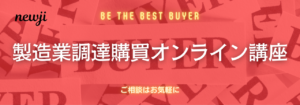- お役立ち記事
- Basics of noise countermeasures in electronic equipment and application to products

Basics of noise countermeasures in electronic equipment and application to products

目次
Understanding Noise in Electronic Equipment
Electronic devices are an integral part of our daily lives, from smartphones to household appliances.
However, one common issue that users and manufacturers face is noise.
This refers to unwanted electrical signals that can interfere with the normal functioning of electronic equipment.
Understanding the basics of noise and how to counter it is crucial for developing reliable and efficient products.
Noise can originate from various sources, both internal and external to the equipment.
Internally, it can arise from circuit components or power supplies, while externally, it might come from electromagnetic interference (EMI) or radio frequency interference (RFI).
Addressing these noise issues requires a combination of design strategies and practical interventions.
Types of Noise in Electronic Equipment
Before we can devise countermeasures, it’s important to understand the different types of noise that affect electronic devices.
1. Thermal Noise
Thermal noise, also known as Johnson-Nyquist noise, arises from the random motion of electrons in a conductor at any temperature above absolute zero.
This type of noise is inherent and unavoidable, but its impact can be minimized through careful design and material choice.
2. Shot Noise
Shot noise occurs due to the discrete nature of electric charge.
This is particularly prevalent in semiconductor devices where random fluctuations in the current flow can create noticeable disturbances.
Design adjustments and quality components can mitigate shot noise.
3. Flicker Noise
Also known as 1/f noise, flicker noise is present in almost all electronic devices and systems.
It is most significant in low-frequency ranges.
This kind of noise can often be reduced through filtering and selecting high-quality components.
4. Electromagnetic Interference (EMI)
EMI is a major concern as it involves unwanted radiation affecting electronic systems.
It can originate from both natural and artificial sources like lightning or mobile phones.
Shielding and grounding are effective strategies to counter EMI.
5. Radio Frequency Interference (RFI)
RFI is similar to EMI but primarily involves high-frequency signals.
It can disturb radio, television, and mobile phone operations.
Effective isolation and use of EMI/RFI filters help in reducing this interference.
Techniques for Noise Countermeasures
Dealing with noise in electronic equipment involves a combination of design approaches and the use of specialized materials and components.
Shielding
One of the primary methods for reducing noise is shielding, which involves enclosing electronic circuits in a conductive material.
This prevents electromagnetic fields from causing interference.
Materials such as copper or aluminum are commonly used due to their excellent conductive properties.
Grounding
Grounding involves creating a reference point in an electrical circuit from which voltages are measured.
It is essential for safety and for eliminating noise.
Proper grounding helps in maintaining a stable voltage level and reducing interference.
Filtering
Noise filters are essential components in electronic systems.
They can be used to block, absorb, or reduce specific ranges of frequencies that cause interference.
Low-pass, high-pass, and band-stop filters are various types that serve different functions in managing noise.
Layout Design
A well-considered circuit layout is crucial for minimizing noise.
This involves the precise placement of components and pathways to avoid unnecessary electromagnetic interference.
Attention to spacing and routing helps in noise reduction.
Application of Noise Countermeasures to Products
Applying noise countermeasures in the design and manufacture of electronic products ensures their reliability and efficiency.
Design Phase
During the design phase, engineers should consider potential sources of noise and incorporate countermeasures into the product layout.
This includes choosing appropriate materials, placing components strategically, and implementing shielding and grounding solutions.
Prototyping and Testing
Building prototypes and conducting thorough testing under different conditions can help identify noise issues early on.
Testing equipment with specialized tools to measure EMI and RFI ensures that products meet industry standards and regulations.
Materials Selection
Selecting the right materials is crucial.
Materials with high electrical conductivity and low permeability are ideal for reducing electromagnetic interference.
Components should be chosen not only for their technical specifications but also for their noise minimization characteristics.
Continuous Improvement
Even after a product’s launch, monitoring its performance and gathering feedback allows for ongoing improvements.
Customer experiences can highlight unforeseen noise issues that might be solvable through software updates or additional shielding.
The Importance of Noise Countermeasures
Effective noise management in electronic equipment enhances the user experience by ensuring that devices operate smoothly without unexpected interference.
Moreover, it extends the lifespan of products and enhances consumer trust by preventing malfunctions that noise can cause.
In industries such as telecommunications, healthcare, and automotive, where precision is critical, ensuring that devices are free from interference is vital.
Thus, integrating noise countermeasures into the product development process is not just beneficial but essential for creating reliable and high-quality electronic products.
Understanding and applying the basics of noise countermeasures can significantly improve product performance and user satisfaction.
By prioritizing these strategies, manufacturers can deliver superior electronic devices that meet the ever-evolving demands of technology and its users.
 資料ダウンロード
資料ダウンロード
QCD管理受発注クラウド「newji」は、受発注部門で必要なQCD管理全てを備えた、現場特化型兼クラウド型の今世紀最高の受発注管理システムとなります。
 NEWJI DX
NEWJI DX
製造業に特化したデジタルトランスフォーメーション(DX)の実現を目指す請負開発型のコンサルティングサービスです。AI、iPaaS、および先端の技術を駆使して、製造プロセスの効率化、業務効率化、チームワーク強化、コスト削減、品質向上を実現します。このサービスは、製造業の課題を深く理解し、それに対する最適なデジタルソリューションを提供することで、企業が持続的な成長とイノベーションを達成できるようサポートします。
 製造業ニュース解説
製造業ニュース解説
製造業、主に購買・調達部門にお勤めの方々に向けた情報を配信しております。
新任の方やベテランの方、管理職を対象とした幅広いコンテンツをご用意しております。
 お問い合わせ
お問い合わせ
コストダウンが利益に直結する術だと理解していても、なかなか前に進めることができない状況。そんな時は、newjiのコストダウン自動化機能で大きく利益貢献しよう!
(β版非公開)




